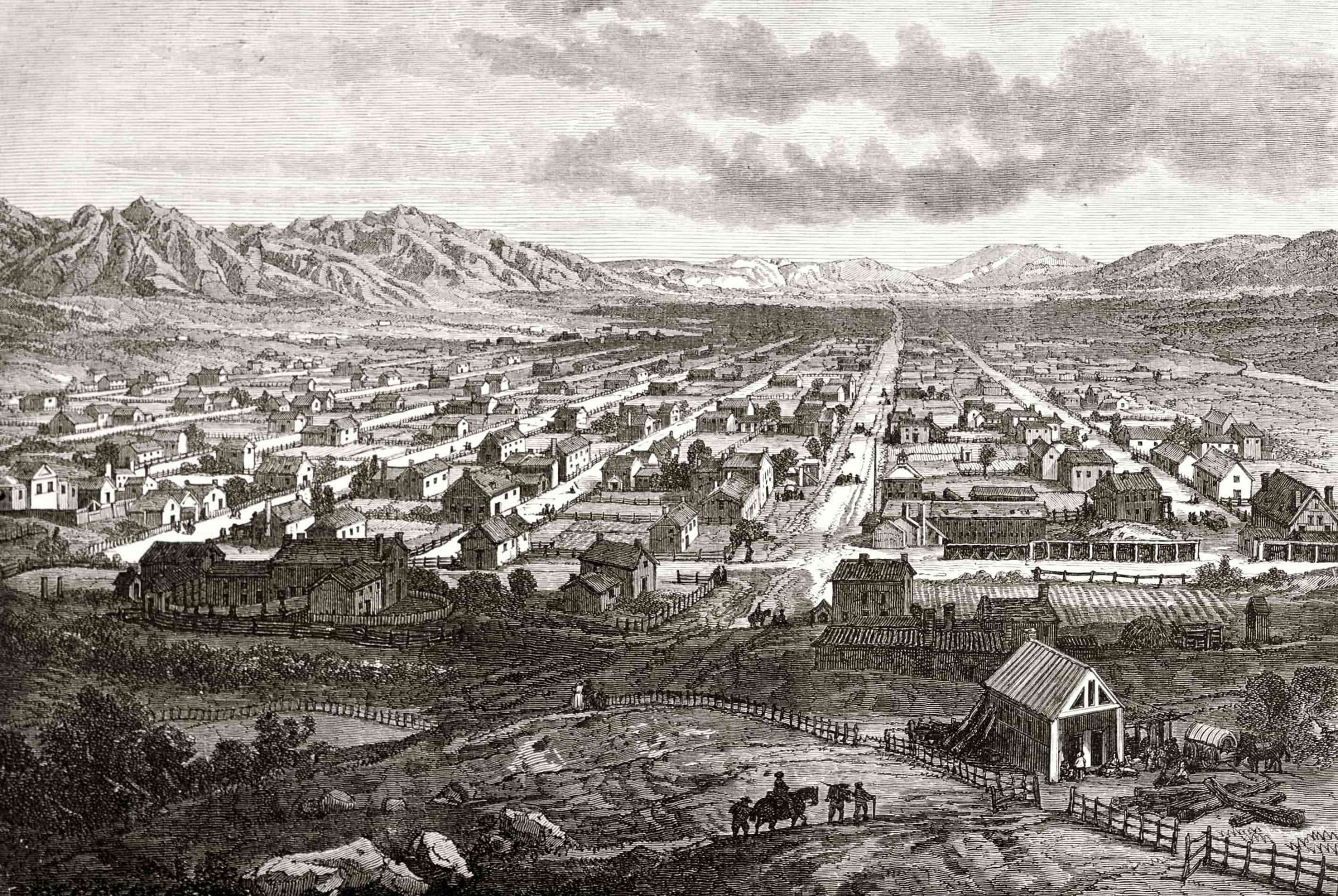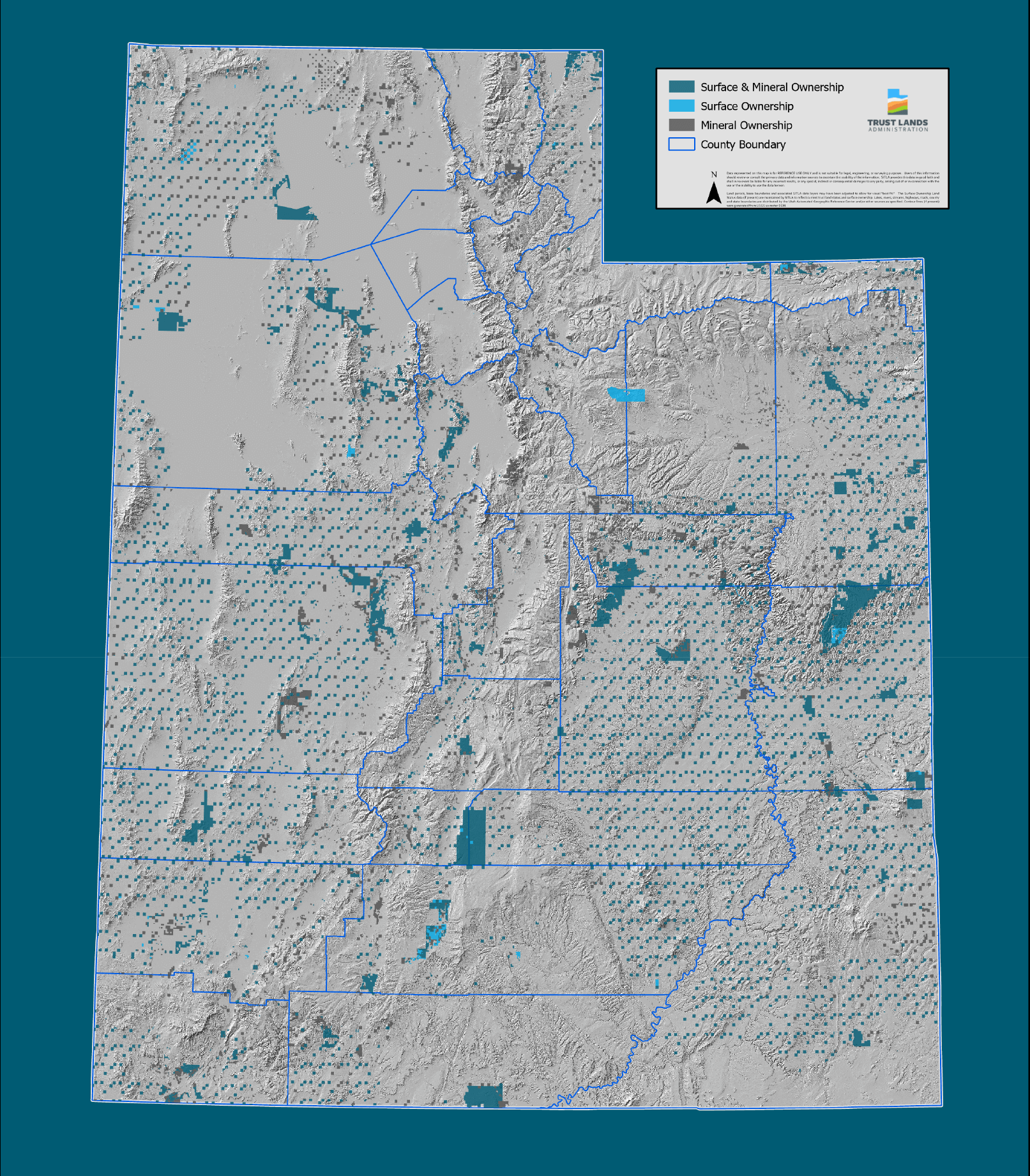
When Utah became a state in 1896, Congress granted lands with the requirement that any revenue generated from the leases or land sales associated with the grant would go into a permanent endowment to support public schools.
To ensure that lands were reserved for the benefit of public education, land parcels were allocated by dividing Utah into 36-square-mile townships, with four sections of land dedicated to Utah’s trust lands in each township.
Additionally, separate grants, known as quantity grant selections, were given to support higher education, health and human services and other state institutions.
Each institution receives an annual distribution−providing an important and growing source of funding for several of Utah’s most important public purposes.

Development

Planning

3.3M
SURFACE ACRES
4.5M
SUBSURFACE ACRES


Fund
Investment
3.5B
COMBINED TRUST
FUNDS BALANCE

Fund Distribution






Trustee
Duties and Responsibilities










